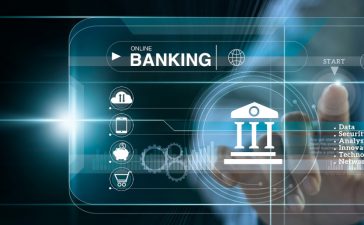There’s a typical misnomer that cash is produced on the printing press. While it’s true that the couple of notes are printed and utilized in commerce, most profit circulation doesn’t have the steadiness of paper notes. Basically a really portion of cash is simply ledger records on the bank computer.
Whenever a central reserve bank must purchase a staple remover or desk, it writes a cheque towards the supplier and takes delivery of the good. The supplier deposits the sign in an industrial bank, and also the commercial bank forwards the check towards the reserve bank for payment. The reserve bank uses the check to erase the liability produced once the check was written and credits the quantity of the check towards the commercial bank.
Let us stick to the accounting beginning with clean balance sheets.
Once the central reserve bank purchases the staple remover (let us say for 10 units) by writing a cheque, the reserve bank’s assets increase by one 10-unit staple remover, and it is liabilities increase by 10 units. The supplier increases both his assets and owner’s equity by 10 units less the price of the staple remover to him.
Once the staple remover supplier deposits the seek advice from his commercial bank, the commercial bank increases both its liabilities and assets by 10 units. When given to the reserve bank for payment, the reserve bank statements the deposit as a rise in assets of 10 units as well as an accounts payable liability (the commercial bank’s account) of 10 units. Because the check continues to be compensated, it’s canceled combined with the 10-unit liability it produced.
By writing a cheque presentable simply to itself, the reserve bank just produced 10 financial units from nothing. Having a couple of keystrokes, the cash supply just been inflated through the 10 units the staple remover supplier presently has on deposit at his commercial bank. Regrettably, the inflation does not hold on there.
For each unit an industrial bank is wearing deposit in the central reserve bank, they are able to lend .9 units. Since our example commercial bank presently has 10 units on deposit in the reserve bank, it will make a 9-unit loan by simply writing another check. In the event that check is deposited at another commercial bank, the 2nd commercial bank will show that check towards the reserve bank for payment. The reserve bank will move 9 units in the first commercial bank’s account towards the second commercial bank’s account and cancel the check.
Now, the staple remover supplier and also the person receiving the borrowed funds proceeds have total bank deposits of 19 units. Obviously, the cash inflation does not even hold on there. The 2nd commercial bank are now able to loan 8.1 units to a different bank which could then loan 7.2 units to a different bank and so forth before the total money supply continues to be elevated by 100 units all without ever turning on one printing press.
Obviously, a main bank are only able to use a lot of staplers. The very best method a main reserve bank has of making cash is by buying government bonds. Since government borrowing is ubiquitous, a reserve bank can certainly get these bonds around the open market. The issue with this particular, though, is it comes down to a dual tax around the people of this country.
The folks are taxed once to pay back the text and interest an additional amount of time in the lower purchasing power their cash. As the costs of the plan are borne through the people, the advantages are recognized exclusively by politicians and also the individuals and corporations who hire the federal government. When the recently-produced money filters through government, government contractors, and banks, the wage-earner derives little rise in his quality lifestyle otherwise an outright decrease.
The central reserve bank is both lynch pin and Achilles heel of the fractional reserve banking system. Monetarist economists claim a main bank is needed to advertise economic stability and growth throughout the economy any costs, they maintain, are outweighed through the benefits. Very couple of monetarists explain, though, the bearers from the cost and receivers from the benefits won’t be the same people. By shrouding a reserve bank within an “official” cloak, bankers and economists fool people into believing that the little ink and paper and lots of digits on the monitor is equally as good as seem money.





